All-American Comics #16 (1940)
by Bill Finger & Martin Nodell
cover by Sheldon Moldoff
“All-American Comics” is a perfect time capsule of the decline of popularity of superheroes after the Golden Age. The series was retitled “All-American Westerns” in 1948 when superheroes didn’t sell anymore, and then again changed to “All American Men of War” until its cancellation in 1966.

The titular Green Lantern shows up in the very first panel. Notice the green flames on the logo; it’s a neat detail that isn’t always visible.
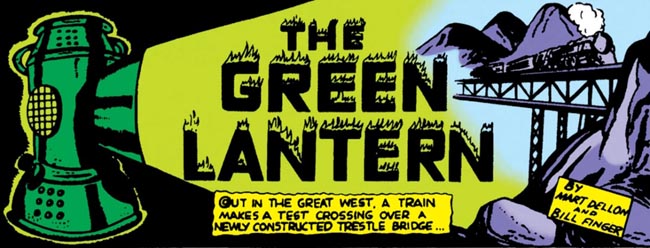
Our protagonist Alan Scott is an engineer in this story, and he’s the sole survivor of a train wreck.

He then loses consciousness and the lantern itself tells him its origin story.

Weirdly enough, while the Golden Age Green Lantern himself is relatively popular among DC readers, I’m fairly sure that the VAST majority of his fans has absolutely no idea of the first version of the origin.
Like a surprising amount of Golden Age origins, it begins in China. This time with a mysterious green meteorite.

Hey, no spoilers!
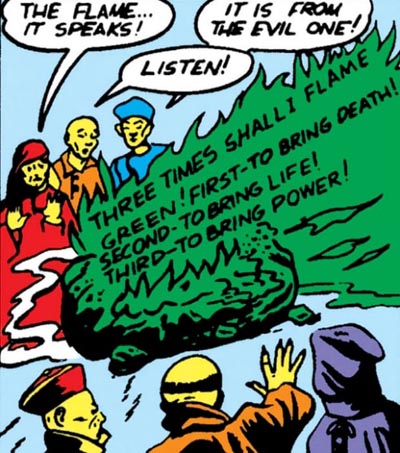
I think we can all agree that “Green Lantern” is kind of a weird name for a superhero. Would it be any less weird if he was called “Green Lamp”?
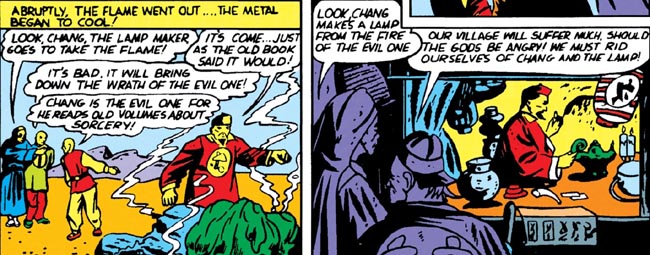
And then the Green Lamp kills everybody. Well it DID warn you, guys!

No wonder most retelling of the origin completely ship the Green Lamp phase. Its setup takes up a whole page, then it’s dismissed one panel later!
It also SOMEHOW ends up in an insane asylum in America.
Which is interesting because Green Lantern will eventually operate in Gotham City, so this might retroactively be Arkham Asylum.
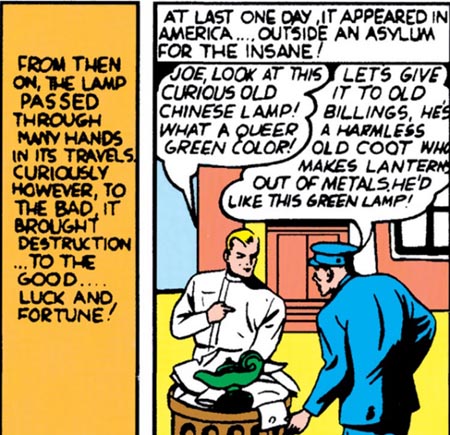
By the way, Green Lantern’s association with Gotham City is NOT a modern thing! It originates in the Golden Age itself, as far back as Green Lantern #14 from 1944.

But back to the origin story: one of the patients of the insane asylum is the one to change the Green Lamp into a Green Lantern. I think this is BY FAR the most random thing that happens in this comic!
And like the Green Meteor prophesized, it shines a second time to “give life”.
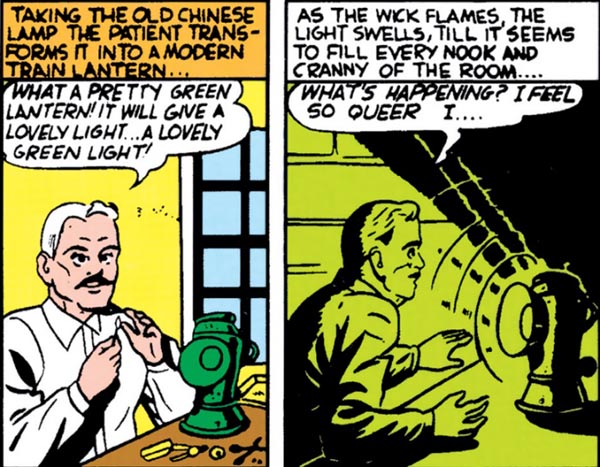
And that cures the patient from his undefined insanity! I appreciate it did this, sure, but… you mean to tell me that the Green Lamp went through who knows how many centuries without EVER working!?
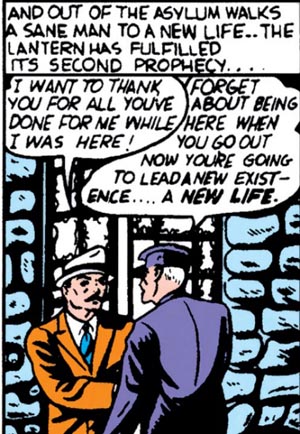
Which brings us back to the beginning of the story, because the Green Lantern shines a third time (the second as a lantern) to give powers to Alan Scott.

At this point you might be wondering: isn’t Green Lantern supposed to get his powers from a ring?
There is no ring, Alan has to make one by himself!!!


We do get a pretty detailed look at the ring, and… uhm… sorry Alan, I’m sure you did your best but it looks just awful.
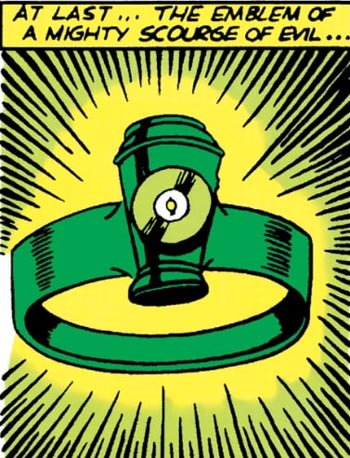
With the ring, Alan decides to get revenge on the man responsible for causing the trainwreck.
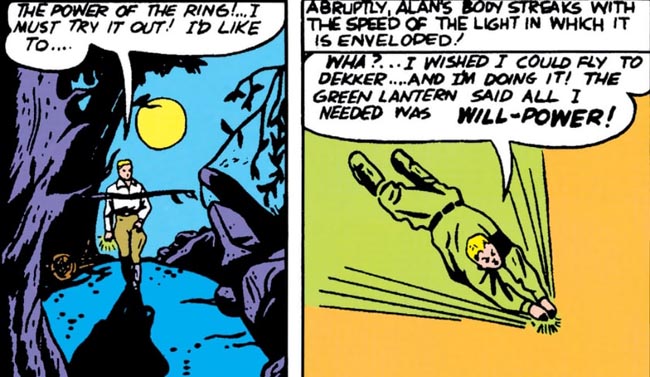
Unlike his most famous Silver Age counterpart, the original Green Lantern’s powers were much less defined. He can do basically whatever the story needs.
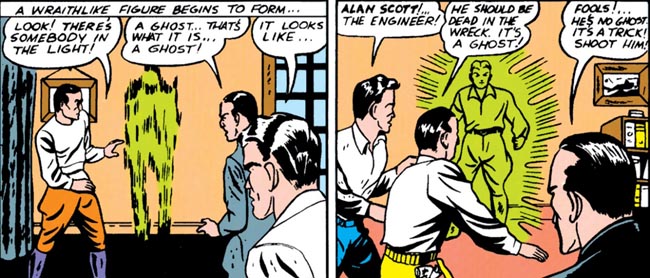
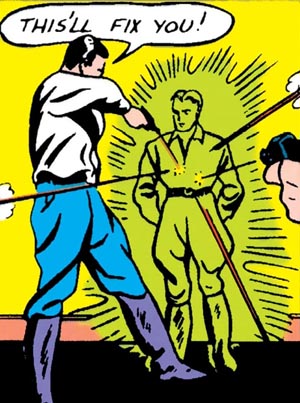
You’d think the fact that his powers are useless against wood would take a little more to come up.
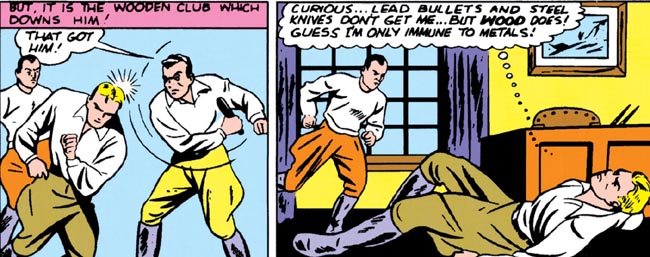
If there is one constant among Golden Age superheroes, is that everyone… EVERYONE… ends up saving the day through old-fashioned fisticuffs.
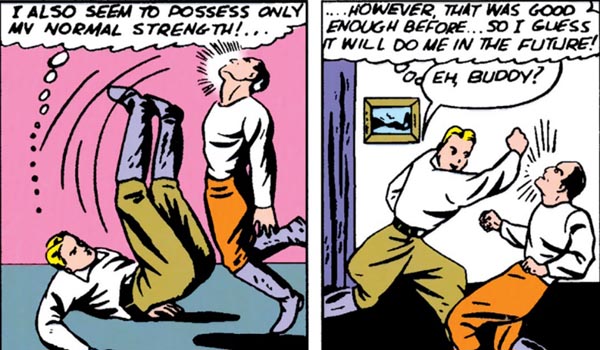
Another thing that’s common among Golden Age heroes is that their villains have a shockingly low survival rate!
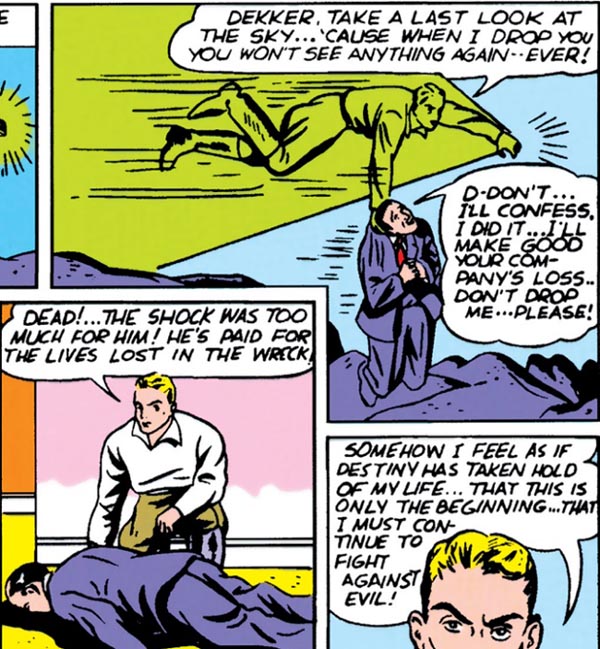
And so we end with Alan making a costume for himself. I’ve always found it funny that, for a guy calling himself Green Lantern, the costume itself doesn’t have all that green.
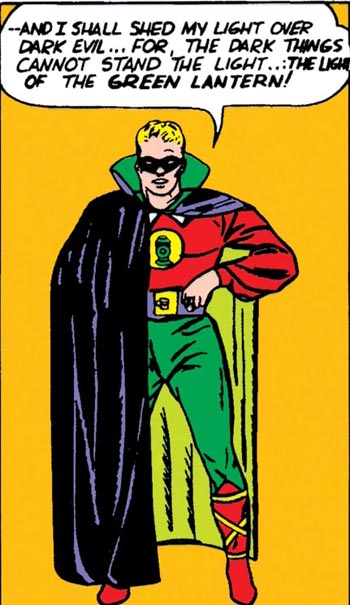
If you’re wondering how long it took him to use the famous oath to recharge the ring: this is from two issues later.

There would be many iterations of the oath, until it takes the classic version in Green Lantern #9 from 1943.

All-American Comics was an anthology series. As you can see, more and more comics are war-themed.
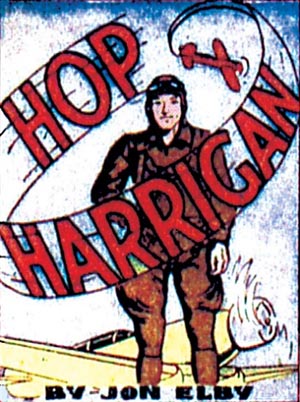

But there are several genres…
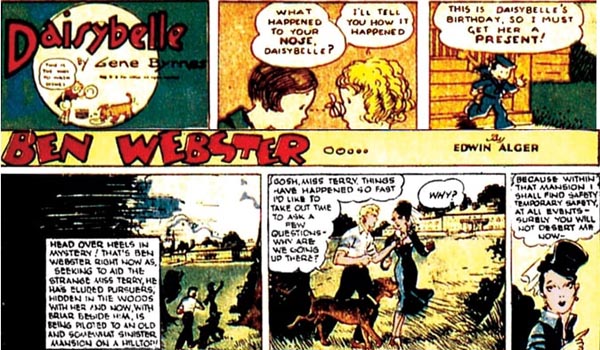



…including FOUR separate Mutt & Jeff strips!

While the story is credited to Bill Finger, Green Lantern is mostly a creation of Martin Nodell (under pseudonym).
Editor Sheldon Mayer of the M.C. Gaines group asked if I had any ideas for a feature character. After our meeting with the editor, I was in a real maelstrom of whirling thoughts on my way home and had no cohesive direction for a character or storyline. I went down into the subway leading to home in Brooklynn. I saw a trainman on the tracks waving down a train with a red lantern, then waving the “all-clear” with a green lantern!
MARTIN NODELL
It took a while before the idea was picked up:
I picked out the name from the train man on the tracks who was waving a lantern, going from red to green. … Green meant go and I decided that was it. Then I needed a colorful and interesting costume. I was interested in Greek mythology and so the costume took on elements of that. It just all fell into place. When I sent it in, I waited into the second week before I heard the word to come in. I was ushered into Mr.Gaines office, publisher, and after sitting a long time and flipping through the pages of my presentation, he announced, ‘We like it!’ And then, ‘Get to work!’ I did the first five pages of an eight page story, and then they called in Bill Finger to help. We worked on it for seven years.
MARTIN NODELL
Allegedly, Nodell chose the name “Alan Scott” by flipping through a phone book.
Historical significance: 7/10
Green Lantern is VERY important for the Golden Age, and he does introduce a concept that will explode in the Silver Age… but the specifics of his first story are not THAT important.
Silver Age-ness: 10/10
The origins of the meteorite’s powers go completely unexplained, plus we have the utterly irrelevant and out of left field Green Lamp plus the hero having to build his own ring.
Does it stand the test of time? 4/10
This origin is all over the place. The entire backstory of the lantern has no weight on the rest of the story, plus Alan is completely devoid of characterization. Not unusual for the Golden Age to be sure, but by this time at the very least Superman and Batman were fully fleshed out characters so it’s not like there was no template.
How close is this to the modern character? 6/10
Much like Jay Garrick, the original Green Lantern managed to stick around by carving out his place as “cool grandpa superhero”. Even through so, so many retcons TRYING to connect him to the sci-fi Green Lantern of the 60s.
He lacks the personal connection Jay has with the new Flash, but Alan ended up making up for it by creating his own legacy thanks to his superhero offspring, Jade and Obsidian.
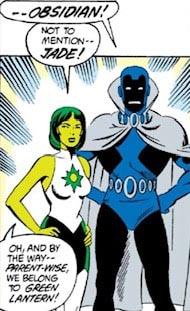
Alan also holds the distinction of having married TWO former supervillains: Rose (mother of his children), who started out as a Flash villain…
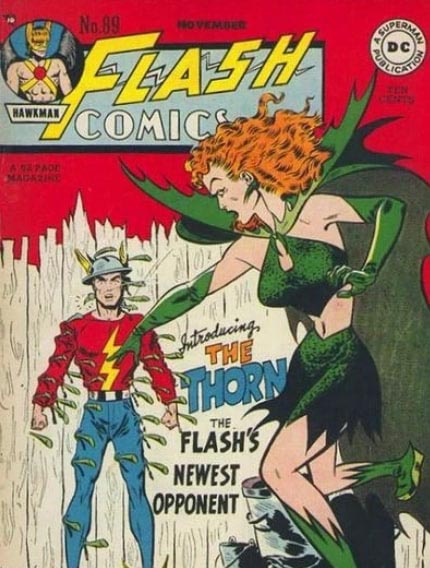
…and later Harlequin (not to be confused with Harley Quinn).
They DID have a “Batman & Catwoman” sort of relationship in the original series, after all.

Not bad for a guy who, in his original series, was kind of bland. He proved popular enough to get his own regular series and show up in multiple anthologies (including joining the Justice Society), sure… but he was one of the first to suffer the decline of popularity in superheroes.
He didn’t get second billing to a comic relief like the Spectre did, mostly because Green Lantern had a comedic sidekick basically from the beginning with Doiby Dickles…
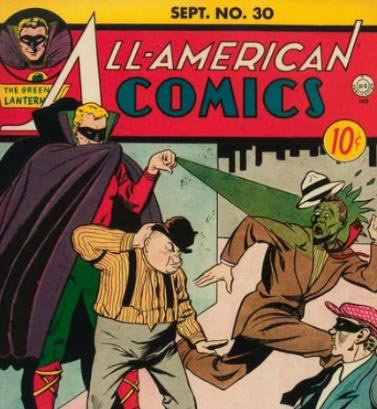
…but he WAS briefly upstaged by “Streak the Wonder Dog” in 1948 (notably, he predates “Rex the Wonder Dog” by four years!).


Actually I liked the original ring design. I didn’t like how later comics would make it a circle with a lantern sign.
In the first story, Scott switches the ring from his right hand to his left. Judging by the panels from later stories, it looks like he was more left-handed. I always thought this was a Silver Age invention to differentiate him from the right-handed Hal Jordan. I wonder if Alan Scott was the first southpaw superhero.